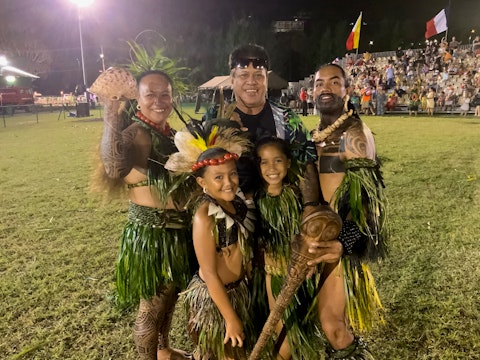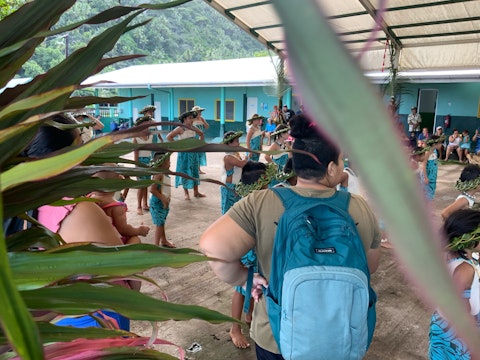Weaving - A Bond of Eternity
Erena Rootuehine lives in Hapatoni, a small village on the island of Tahuata in the south of the Te Fenua Enata archipelago (Marquesas Islands), she is one of the few people still making braided cords from coconut fibre, as grandmothers did before her.
Erena Rootuehine lives in Hapatoni, a small village on the island of Tahuata in the south of the Te Fenua Enata archipelago (Marquesas Islands), she is one of the few people still making braided cords from coconut fibre, as grandmothers did before her.
In a world without nails or screws, raw materials and, in particular, natural fibres, were one of the rare resources for making objects in Oceania. Indeed, the entire art of the Polynesians is based on their astonishing ability to take advantage of the generosity of nature that was available to them. The art of weaving and basketry, present at every stage and in almost every object of daily life, was incredibly accomplished: ropes, braids and ties used for navigation (pirogues, sails), fishing (nets, traps, hooks), housing, to make baskets, tools, clothing, weapons (spears, clubs, slings), music (drums), ornaments and prestige objects (ornaments, headdresses, fans), religion (mourners' costumes)...
Erena has bags of coconuts sent to her by her daughter, who lives in Motopu, a valley in the north of the island. The coconuts are bigger there, which is much better for weaving. Sometimes her daughter helps her to clean the fibres, but she is also very busy making Tamanu oil (scientific name Calophyllum inophyllum), the almond tree with medicinal properties. Erena tells me that she doesn't dare disturb her. Breaking open the coconuts is a particularly physical activity and requires a good technique.
Once the coconuts have been opened and freed from their nuts, she places the pieces in a bucket of water to soften the fibres. A stone has to be placed on top to ensure that everything is well submerged.
Then it's time to beat the fibres on a large flat stone using an ironwood beater, known as an Ike in Marquesan. This is an important step to ensure that the fibres are separated from the organic matter that binds them together. Then comes the moment to comb a small bundle of fibres to clean them thoroughly so that only the fibre stalks remain.
Erena points out that the matter must not be wasted; when fibres are carried away by the comb, she sets them aside and takes up those of a sufficiently large size for a new stage of combing. She goes back and forth in the water a few times during the beating and combing stages. One fibre is used to knot the small bundle of clean fibres and the whole is placed in a small vat of clear water.
On to the weaving. She now settles down at her second workstation on the terrace of her house, where several generations meet. She sets up two chairs facing each other, one on which she sits, the other holding the small tub of clear water with the clean fibres, and stretches out her leg beside it. She picks up her braided bobbin and tucks the rope between her toes. Between the index, middle and ring fingers of her left hand, she holds the small bundle of fibres ready to be braided. With her right hand, she picks out a fibre, positions it and dips her fingertips in the water - this is important to smooth out the whole thing. Then she picks up one fibre after another, adding them to the work, taking care to ensure that the braid is always the same thickness. The tips of her thumbnails have several small notches, imprints left by certain fibres that needed a final clean when braiding.
Erena's hands are strong and confident, like the vast majority of women on these islands, despite their age. She braided for several hours. Once she's finished, there's one last step, which is to cut the fibres that protrude from the braid. She generally uses a nail clipper.
Erena sells 500CFP a metre, or €4.20. People buy spools from her to decorate other craft creations, to make jewellery and costumes.
Today, only a handful of local people carry on this traditional craft, mainly elderly women who do it from home.
The work takes a long time to do and requires a great deal of patience and dexterity, and the tradition is gradually being lost as young people are less and less willing to devote the time to it. When it comes to training courses for young people, we prefer sculpture and tattooing, which are more profitable and easier to find lucrative outlets for. We also know that this depends on the political will to promote these traditional arts.
I'm thinking, for example, of the Indian model, which has banned single-use plastic when serving chai on the country's trains and replaced it with earthenware pots, putting thousands of people to work and considerably reducing the ecological impact.
But can this type of measure be implemented in a territory that is still colonised?








